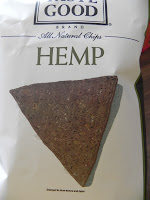On Saturday, at the farmers market, I was able to buy purslane from a local, organic farmer. Why, you might ask, would I buy something that I could forage so easily (purslane, I've learned from the internet grows all over the world and in the United States can be found pretty much everywhere)? Because my town sprays everything. In spring and fall, especially, lawns are unnaturally green and weed-free. It's unusual to spot dandelions in the manicured lawns here and most homes seem to come equipped with a "keep children and pets off for 24 hours" sign because of recently applied chemicals. These all seem like good reasons not to harvest this edible.
Purslane thrives in poor soils and is a sprawling plant (though it can grow vertically as well). When the plant is young, the leaves and stem are both green. As it grows older, the stems begin to turn red. Many people consider purslane a weed (one of its nicknames is "pigweed") and just rip it out of sidewalk cracks and gardens indiscriminately.
 |
| Purslane |
Purslane (Portulaca oleracea if you were wondering) is a small succulent with yellow flowers and, like many succulents, has a clear substance flow from it when you break off a piece (such as the stem). The leaves are a good source of vitamin C (surprise, surprise -- a leafy green that's high in Vitamin C) and omega-3s. It also contains calcium, sodium, potassium, magnesium, iron, zinc, copper, and thiamine. Often, it's eaten raw as part of a salad (or the salad itself), but can also be steamed or sauteed lightly and served like you might a spinach dish. When you eat it like a traditional salad, you'll taste it's slightly lemony, slightly salty taste more distinctly than you will in the warm salad I made.
When purslane goes to seed, the seeds are tiny and black, and can be dried and roasted, and are a good source of protein and fat. These seeds can also be ground into a flour. I haven't tried any of these things.
Instead, what I tried was a warm purslane salad. I use the term "salad," because I used red wine, lemon juice, and olive oil while cooking my purslane, which created a sort of vinaigrette. This dish worked well for two veggie-loving people, when placed on a plate with other seasonal veggies (such as fennel and yellow squash) and a small quinoa salad.
Purslane with Garlic and Raisins
Olive oil
1 tablespoon chopped onion
1 pound purslane, roughly chopped
1 teaspoon minced garlic
2 tablespoons red wine
1 teaspoon lemon juice
2 tablespoons raisins (optional)
Salt
Heat a skillet over medium heat and then add just enough olive oil to lightly coat the bottom of the pan. Saute the onions until they turn brown, then add the purslane and minced garlic. Saute 2-3 minutes, until the purslane begins to wilt (depending on the size of your skillet, you may not be able to add all your purslane at once. This is okay). Add the red wine, lemon juice, and raisins, then cover the skillet for 2-4 minutes, until the purslane is wilted and raisins have begun to plump. Season with salt (to taste, I used just a sprinkle) and serve warm.
 |
| Warm Purslane Salad next to Quinoa |

















